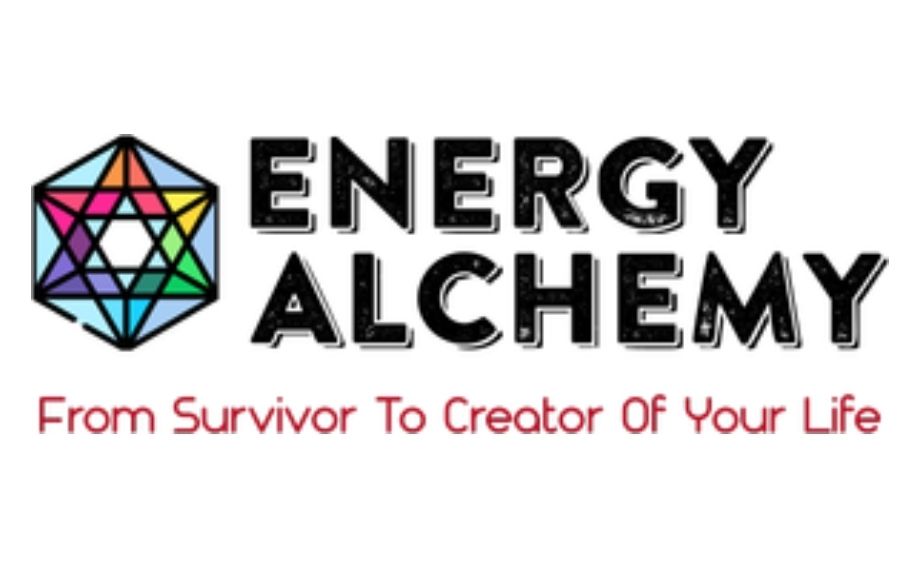Understanding the Lingering Shadows
Melanie Simon | Energy Alchemy
Childhood Trauma and CPTSD
Childhood is often idealized as a time of innocence, play and unconditional love. Unfortunately, many of us didn't experience it this way. The truth is that dysfunction within family systems is more common than not, and the long-term effects on our mental, emotional, social, and in turn physical health, are having more of an impact on our lives today than many people realize. As we attempt to numb ourselves through various distractions and other coping mechanisms, we often don’t recognize that finding a sense of peace and healing is an attainable choice.
According to the Center for Disease Control and Prevention (CDC):
- Approximately 64% of US adults, and at least 60% of the world's population, reported that before the age of 18 they were subject to at least one adverse childhood experience (ACE)
- 1 in 6 (17.3%) of adults have experienced 4 or more ACEs
- In 2022 an estimated 558,899 children were victims of abuse and neglect in the US
- About 25% of American children will experience a significant traumatic event by the age of 16
In Buddhism, the first of the Four Noble Truths states that suffering is a fundamental aspect of the human experience, and accepting this truth can lead to liberation from it. This page is not intended to blame or shame parents and caregivers. Each of us is doing our best with the knowledge we have in the moment. My aim is to promote awareness so that we can learn, heal, and become more intentional in the ways we raise and influence our children.
That being said, the reality is that at some point in our lives most everyone will experience a form of trauma. Unfortunately, it often occurs early in life. When this happens at our most vulnerable time—especially at the hands of people who are meant to love and protect us, even if well intended—it can create long lasting consequences on the health of our minds and bodies, while also hindering our ability to form and maintain healthy relationships.
Experiencing trauma as a child is so critical because it impacts the developing brain and psyche as our sense of self and safety are still forming. Consequently, these experiences can disrupt this development which leads to profound and pervasive difficulties later in life.
As stated by the CDC:
- Exposure to ACEs can lead to an increased risk of chronic health conditions like heart disease, depression and suicide
- Exposure to 6 or more ACEs can lower life expectancy by nearly 20 years
- Childhood trauma is a significant public health issue with long lasting consequences
- The impact of ACEs can be far reaching—affecting physical and mental health, social and occupational outcomes and even economic development
- Early intervention and support can help children heal trauma and develop into healthy adults
Many people who have been impacted by developmental trauma go through life unaware of the complexity of seemingly unrelated effects, and therefore tend to form a sense of identity bound up in shame as they struggle to function or progress in life and relationships in contrast to their peers. This often leads the child to come to their own conclusion that something must be fundamentally wrong with them.
Going through childhood with unmet needs, especially emotional, often leads to a variety of maladaptive coping mechanisms, including various addictions. This coping provides the child a way to resolve their internal pain for the short term in an attempt to fill the void of secure attachment. As these thought and behavioral patterns become subconsciously habitual, the child grows into adulthood repeating what worked to help them survive in childhood, but find these patterns are now working against them.
For many, childhood is a period of time that has left deep and lasting scars. As we find ourselves forced onto the hamster wheel of adulthood, we tend to suppress, deny and distract ourselves, while unknowingly acting out our wounding in destructive ways. When we don’t address our trauma directly, we can hurt ourselves, others and pass it down to the next generation through unhealthy habits and relationship dynamics.
What is Trauma?
The word trauma carries such stigma which can feel too heavy to acknowledge or admit, even to ourselves for valid reasons. Trauma is defined as the emotional and psychological impact of a distressing or harmful event. Left unresolved, trauma can unknowingly wreak havoc in our lives and relationships.
As Dr. Gabor Maté, addiction and trauma expert, says “Trauma is not about what happened to you, it’s about what happened inside of you as a result of what happened to you.” Therefore, the same experience can affect two people, even siblings, very differently based on one's individuality—temperament, personality, past experiences, inner world and how one makes sense of it.
Trauma has been categorized by “big T” and “little t” trauma, and both can leave long lasting effects. “Big T” trauma is referring to what we’d usually think of as a traumatic experience and characterized as often a single event that is life threatening, highly distressing, and overwhelming. Some examples of “big T” trauma include:
- Car accidents
- Natural disaster
- Violent attacks
- Combat
- Sexual assault
- Domestic violence
- Traumatic loss—like a parent
- Chronic abuse
- Medical or illness trauma
“Little t” trauma is more subtle, and as a consequence often its effects are minimized and overlooked. While usually not physical or life threatening, it can have just as much—often more—of a negative impact on a child’s mental and emotional development as it is usually repeated over time. Examples of “little t” trauma include:
- Divorce or separation
- Infidelity
- Emotional abuse and neglect
- Bullying and rejection
- Dysfunctional family systems and household dysfunction
- Loss of a significant relationship or pet
- Financial insecurity
- Witnessing violence
When the trauma is chronic, repeated and interpersonal, it can lead to a complicated and often misunderstood condition known as Complex Post Traumatic Stress Disorder, or CPTSD.
Beyond PTSD: Introducing Complex PTSD (CPTSD)
When we think of someone suffering from PTSD, we tend to envision a war veteran or an individual who has experienced a devastating car accident or natural disaster. Often occurring from a single, distinct traumatic event leaving a person with flashbacks, nightmares and avoidance behaviors. Complex PTSD presents a broader and often more deeply ingrained set of challenges.
Despite efforts and profound evidence, CPTSD is not yet an official separate diagnosis in the Diagnostic and Statistical Manual of Mental Disorders (DSM-5) used in the US. However, it is recognized by the World Health Organization’s International Classifications of Diseases (IDC-11). It is distinct as it develops from prolonged repeated trauma, especially when the trauma is:
- Interpersonal: Occurring within relationships where the victim is dependent on the perpetrators (child abuse, domestic violence, human trafficking)
- Early in life: Happening during crucial developmental stages
- Difficult to escape: The victim feels trapped or powerless
The Distinct Characteristics of CPTSD
CPTSD encompasses the core symptoms of PTSD, but also includes significant difficulties in other areas:
- Emotional Dysregulation
This is the hallmark of CPTSD. Individuals may experience intense mood swings, difficulty managing anger, chronic feelings of sadness or emptiness, and difficulty experiencing positive emotions
- Distorted Self-Perception
A deep sense of shame, guilt, worthlessness and/or helplessness is common. They may feel inherently “bad” or “flawed”
- Relationship Difficulties:
Due to a disrupted sense of trust and secure attachment, individuals with CPTSD often struggle with forming and maintaining healthy relationships. They may fear intimacy, have difficulty setting boundaries, or repeatedly find themselves in unhealthy dynamics
- Dissociation
This involves a disconnection from one’s thoughts, feelings, memories or sense of identity. It can manifest as feeling detached from one’s body, memory gaps or sense of unreality
- Physical Symptoms
Chronic pain, fatigue, digestive issues and other unexplained physical ailments are frequently reported
- Loss of Meaning and Hope
A pervasive sense of hopelessness about the future and difficulty finding purpose in life
The Road to Healing
Without awareness of its impact, living with the aftermath of childhood trauma and CPTSD feels like a complexity of unrelated issues leading to a shame bound identity, emotional overwhelm and isolation. However, it is crucial to remember that healing is a choice that is absolutely possible. It is a journey and often involves:
- Therapy
Trauma informed therapies like Eye Movement Desensitization and Reprocessing (EMDR), Dialectical Behavioral Therapy (DBT), Internal Family Systems (IFS), Cognitive Behavioral Therapy (CBT), and Somatic Therapy can all be effective modalities. A therapist specializing in CPTSD can help individuals process their trauma, develop healthy coping skills and rebuild a sense of self and safety
- Building a Support System:
Connecting with trusted friends, family or support groups can provide validation and a sense of belonging
- Self Care:
Prioritizing physical health through proper nutrition, exercise and sleep—as well as engaging in mindfulness and relaxation techniques can help regulate the nervous system, including the vagus nerve
- Knowledge and Awareness
Leveraging the abundance of free information accessible online to educate oneself and gain insight into the impact of childhood trauma can provide crucial validation and a strong foundation for healing. Engaging in meditation and journaling can serve as effective tools for cultivating self-awareness around unhealthy thoughts, feelings, behaviors and limiting beliefs. The ACEs quiz linked in the resources below might be a useful tool to get started
- Patience and Compassion:
Healing from CPTSD is not a linear process. It requires immense patience, self-compassion and a recognition that setbacks are a normal part of the journey
If you or someone you know is struggling with the effects of childhood trauma or suspect they may have CPTSD, please reach out for professional help and support. Understanding these conditions is the first step towards breaking free from their lingering shadows and the blockages keeping us from building a life of greater peace and well-being. You too can find emotional freedom from the past, and transform from the survivor to the creator of your life. Remember to breathe, and trust the process.
You are not alone! Comment below for a safe space to share your experiences.
With Love and Encouragement on your journey,
xx
Melanie
Resources
While it may be limited, completing the quiz below can serve as a valuable starting point in identifying whether you have been impacted by Adverse Childhood Experiences.:
Visit the CDC website to learn more about ACEs:
https://www.cdc.gov/aces/about/index.html
For more on Dr. Gabor Maté you can visit his website or check out one of his books:
The Myth of Normal:
Suggested BOOKS on this subject with affiliate links:
- Complex PTSD: From Surviving to Thriving
- By: Pete Walker
- https://amzn.to/3HZT6JG
- The Body Keeps the Score: Brain, Mind and Body in the Healing of Trauma
- By: Bessel Van Der Kolk MD
- https://amzn.to/3ZBenQ4
- Healing the Shame that Binds You
- By: John Bradshaw
- https://amzn.to/4n2Fr4R



